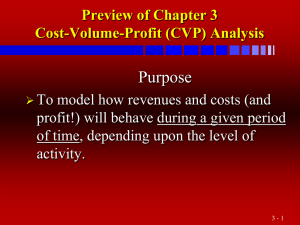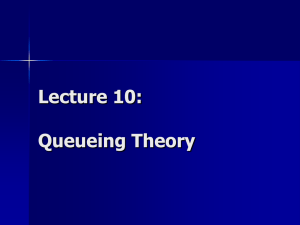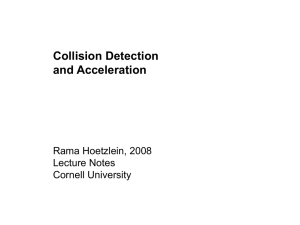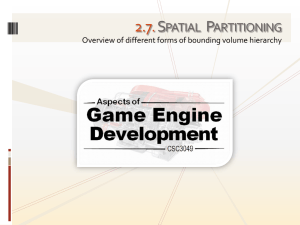Genetics
advertisement
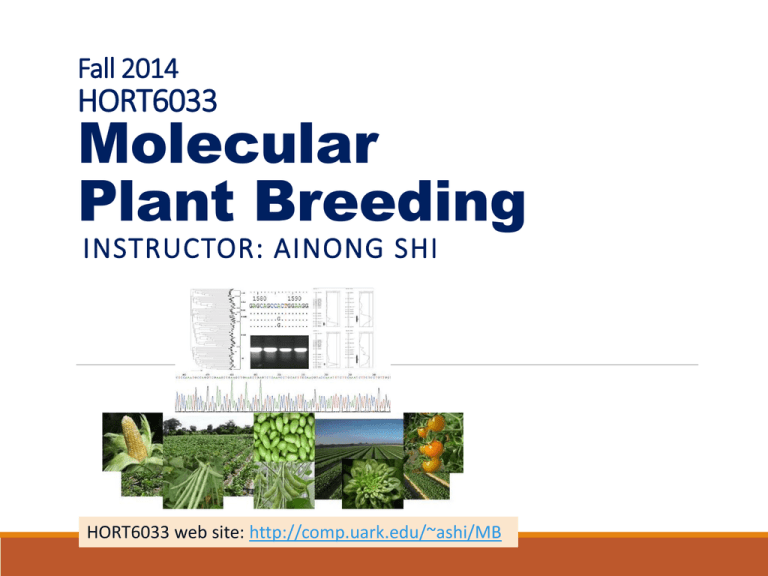
Fall 2014 HORT6033 Molecular Plant Breeding INSTRUCTOR: AINONG SHI HORT6033 web site: http://comp.uark.edu/~ashi/MB Fall 2014 HORT6033 Molecular Plant Breeding Lecture 6 (09/10/2014) I. Mendel genetics II.Example III.Research Project IV.Homework V.Questions Mendel Genetics • Genetics is the study of genes. • Inheritance is how traits, or characteristics, are passed on from generation to generation. • Chromosomes are made up of genes, which are made up of DNA • Arrangement of nucleotides in DNA • DNA RNA Proteins • Genetic material (genes,chromosomes, DNA) is found inside the nucleus of a cell. Biology Junction Gene – a unit of heredity; a section of DNA sequence encoding a single protein Genome – the entire set of genes in an organism Alleles – two genes that occupy the same position on homologous chromosomes and that cover the same trait (like ‘flavors’ of a trait), such as Sw-5 and sw-5 of tomato spotted wilt virus resistance. Locus – a fixed location on a strand of DNA where a gene or one of its alleles is located. Genotype – the genetic makeup of an organisms, Such as Sw5Sw5 Phenotype – the physical appearance of an organism (Genotype + environment) Such as Tomato spotted wilt virus resistace Monohybrid cross: a genetic cross involving a single pair of genes (one trait); parents differ by a single trait. P = Parental generation F1 = First filial generation; offspring from a genetic cross. F2 = Second filial generation of a genetic cross Homozygous – having identical genes (one from each parent) for a particular characteristic such as Sw-5Sw-5 Heterozygous – having two different genes for a particular characteristic, such as Sw-5sw-5. Dominant – the allele of a gene that masks or suppresses the expression of an alternate allele; the trait appears in the heterozygous condition. Recessive – an allele that is masked by a dominant allele; does not appear in the heterozygous condition, only in homozygous. Flower color For example, flower color: P = purple (dominant) p = white (recessive) If you cross a homozygous Purple (PP) with a homozygous white (pp): PP Pp pp ALL PURPLE (Pp) Cross the F1 generation: Pp P p Pp P p PP Pp Pp pp Genotypes: 1 PP 2 Pp 1 pp Phenotypes: 3 Purple 1 White 1. Suppose: Pea has two flower colors: purple and white, controlled by a major gene ‘T1’ and the purple is dominant. Parent 1 is purple flower (T1T1) and Parent 2 white flower (t1t1). Questions: (1) If we make a cross between the two parents, what is the color in F1? Color= (1) If the F1 self-pollinated, what is the expected ratio between purple to white color plants in the F2 population? Purple : white = (1) If F1 is backcrossed to Parent 1, what is the expected ratio between purple to white color plants in BC1F1(P1) population? Purple : white = (1) If F1 is backcrossed to Parent 2, what is the expected ratio between purple to white color plants in BC1F1(P2) population? Purple : white = Public Talk for Mendel Genetics http://www.slideshare.net/mazz4/genetics-a-d29687785?next_slideshow=1 Two Gene Model P1 (AABB) x P2 (aabb) F1 (AaBa) F2 AABB x aabb male AB (1-r)/2 ab (1-r)/2 Ab r/2 aB r/2 AB (1-r)/2 AABB (1-r)(1-r)/4 AaBb (1-r)(1-r)/4 AABb r(1-r)/4 AaBB r(1-r)/4 ab (1-r)/2 AaBb (1-r)(1-r)/4 aabb (1-r)(1-r)/4 Aabb r(1-r)/4 aaBb r(1-r)/4 Ab r/2 AABb r(1-r)/4 Aabb r(1-r)/4 AAbb r*r/4 AaBb r*r/4 aB r/2 AaBB r(1-r)/4 aaBb r(1-r)/4 AaBb r*r/4 aaBB r*r /4 Female When r=0.5, two genes independent, i.e. two genes are located at different chromosomes; When r=0, two genes are located at same locus, i.e. same gene or no crossover Genotypes and their frequencies postulated for the two allele A and B with a recombination frequency (r) in F2 and F2:3 population derived from a cross P1(AAbb) x P2 (aaBB). Male F2 AAbb x aaBB† Ab (1-r)/2 aB (1-r)/2 Female AB r/2 ab r/2 Ab (1-r)/2 AAbb (1-r)(1-r)/4 R‡ AaBb (1-r)(1-r)/4 Seg=R aB (1-r)/2 AaBb (1-r)(1-r)/4 Seg=R aaBB (1-r)(1-r)/4 R AB r/2 AABb r(1-r)/4 R AaBB r(1-r)/4 R AABb r(1-r)/4 R AaBB r(1-r)/4 R AABB r*r/4 R Aabb r(1-r)/4 Seg aaBb r(1-r)/4 Seg‡ AaBb r*r/4 Seg=R ab r/2 Aabb r(1-r)/4 Seg aaBb r(1-r)/4 Seg AaBb r*r/4 Seg=R§ aabb r*r /4 S‡ † A, presence of Rsv1 allele; B, presence of Rsv1-y allele; a, presence of rsv1 allele; b, presence of rsv1-y allele. ‡ R, resistant; S, susceptible; Seg, segregating for resistant and susceptible. § Since it is extremely difficult to distinguish F 2:3 lines that are segregating for two closely genes (AaBb) from F2:3 lines that are homogenous resistant due to limitation of population, lines with AaBb are grouped with All R class marked Seg=R in the table. LINKED 13. Suppose: A SNP marker M1 [A/C] is linked to the pea color gene ‘T1’ with the recombination rate r. In the above 1-(4) BC1F1(P2) population, the genotypes and phenotypes and their count are below. Questions: (1) Write the Chi-square (χ2) formula using above count for testing M1 and T1 as a single allele: Answer: χ2 (M1) = Answer: χ2 (T1) = (2) What is the recombination rate r between M1 and T1? Answer: r = 14. If there are 100 individuals and the recombination rate r between M1 and T1 is 0.1 in above BC1F1(P2) population, what are the expected count for the four genotypes? ACT1t1 = CCt1t1 = ACt1t1 = CCT1t1 = Research Project Available in UAF Vegetable Breeding program I. Dandelion 1. EST-SSR discovery and validation in dandelion 2. EST-SNP discovery and validation in dandelion II. Spinach Association analysis and SNP markers for leaf traits in spinach Association analysis and SNP markers for mineral components in spinach SNP discovery and genetic diversity in spinach SSR discovery and genetic diversity in spinach Slowing-booting and QTL mapping in spinach QTL mapping and SNP marker identification for downy mildew resistance in spinach Develop a SNP set for spinach variety determination III. Chicory and Endive EST-SSR discovery and validation in chicory and endive EST-SNP discovery and validation in chicory and endive SNP discovery and genetic diversity in chicory SNP discovery and genetic diversity in endive Develop a SNP set for chicory and endive variety determination Research Project Available in UAF Vegetable Breeding program IV. Cowpea 1. EST-SSR discovery and validation in cowpea and genetic diversity 2. EST-SNP discovery and validation in cowpea and genetic diversity 3. SNP discovery from genotyping by sequencing in cowpea 4. Genetic diversity analysis for world-wide cowpea germplasm 5. Association analysis of low phosphorus efficiency in cowpea 6. Association analysis of aphid tolerance in cowpea 7. Association analysis of cowpea bacterial blight in cowpea 8. Association analysis for morphological traits in cowpea 9. Association analysis of salt tolerance in cowpea 10. Association analysis of cowpea mosaic virus in cowpea 11. Association analysis of iron deficiency chlorosis in cowpea 12. Association analysis of seed size in cowpea 13. Association analysis of maturity in cowpea 14. Association analysis of seed ANTIOXIDNT content in cowpea 15. Association analysis of seed protein content in cowpea 16. Develop a SNP set for cowpea variety determination

